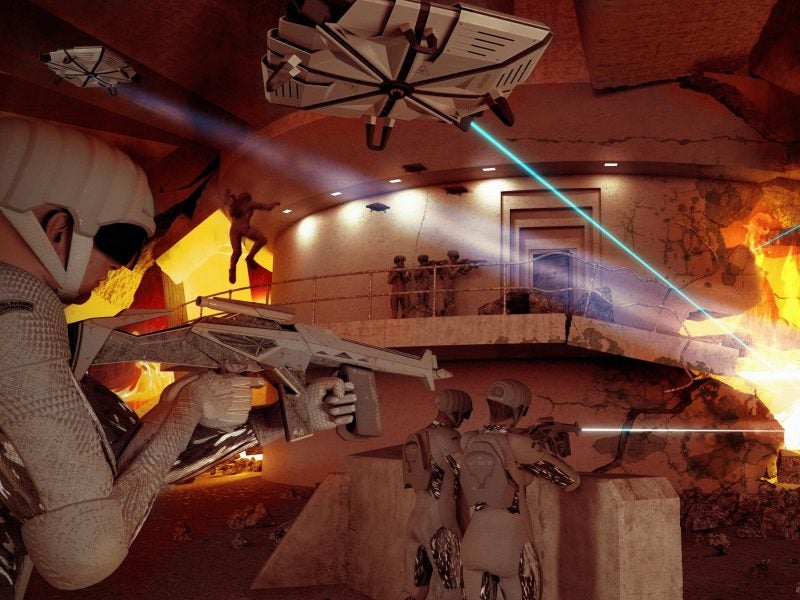
The UK Royal Marines have partnered with engineering graduates from the UK Naval Engineering Science and Technology Forum (UKNEST) to envision future Royal Marines equipped with exoskeletons, laser weapons and holographic decoys.
The future vision was developed after graduates were tasked to plan “a mid-21st-century assault by Royal Marines on an enemy missile site perched on a clifftop.”
Technologies included in the plans were ‘flying wings’ to silently deploy commandos, Iron Man-style heads-up displays that show a soldier’s vital signs, laser-equipped drones for close-fire support and ships fitted with long-range rail guns for offshore fire.
The science-fiction imagining of the Royal Marines is still a long way off, but they have been looking into the use of jet-packs as a possible future deployment system.
Royal Marines Commandant General, Brigadier Matt Holmes, said: “The Marines form over 40 per cent of Britain’s Special Forces and are seen as the tip of the spear. Our objective has been to envisage radical capabilities to make us more agile and lethal while being able to operate in a complex digital and networked future environment.
“We can’t say how much or how quickly the reality of these visions will come to fruition. But what we can say is that if only 20% of these ideas come to reality then we will be at the cutting edge of tomorrow’s technology.”
Royal Marine Major Matt Perks who spearheaded the project said: “This was one of those inspiring projects that captured peoples’ imagination. The Royal Marines have always prided themselves on thinking differently, but we know we don’t have all the answers when it comes to designing the Future Commando Force, so working with these incredibly talented young engineers was a chance to push the conceptual boundaries of amphibious warfare in ways we hadn’t considered.”
The graduates who worked on the project came from Airbus, Atlas Elektronik, Babcock, BAE Systems, BMT, Dstl, L3, Lockheed Martin, the UK Ministry of Defence, QinetiQ, Rolls Royce, SEA, and Thales.
Other technology the team suggested included boots that can store energy from motion to power an exoskeleton, bedrolls that double up as solar panels magnetically attached backpacks to reduce strain, and a portable 3D printer allowing the commandos to print meals in the field. An imagined laser weapon called the ‘dual-mode rifle’ would fire both bullets and directed energy.
The Marines could deploy via a future vehicle such as the ‘Ekranoplan landing craft’ which, like the X-Men’s X-Jet, features an active camouflage system to silently and stealthily deploy Royal Marines across long distances.
The Royal Marines also envisaged a suite of drone force multipliers to complete a range of tasks from carrying equipment, soldier escort, resupplying embedded troops and extracting soldiers.
The scenario pictured by the Royal Marines saw a future force being deployed from the HMS Queen Elizabeth aircraft carrier, scaling a cliff to reach an anti-air target and then neutralising to allow F-35s to strike infrastructure. The Marines would then be redeployed and sent to carry out their next objective.
Current technology being developed for the Royal Marines will be on show at this year’s Defence and Security Equipment International (DSEI) in September.



